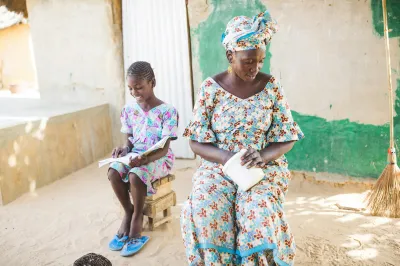Leveraging Gender Lens Investments for Women’s Financial Needs
Advancing gender equity and women’s economic empowerment (WEE) has recently been high on the agenda for development funders. CGAP’s 2019 Funder Survey noted that an increased number of funders are focused on expanding the range of suitable and meaningful financial services for women, improving women’s financial capabilities and addressing gendered barriers impeding women’s economic empowerment. Gender lens investing (GLI) is evidently a popular approach being deployed by a wide range of funders to drive financial inclusion and to increase women’s economic participation.

GLI can be described as an investment approach that intentionally integrates gender-based factors across the investment process to better inform investment decisions and advance gender equality. It is rooted in the belief that socially responsible investing can address some of the systemic barriers women and girls face around the world, thereby unlocking economic value through their empowerment. The approach has gained momentum among a wide range of investors as a means of promoting the social and economic empowerment of women to address gender inequality (SDG 5). For example, the global gender finance initiative 2X Challenge has grown from eight founding members in 2018 to 18 development finance institutions in 2020, with an increased commitment in funds from the initial $3 billion to $15 billion.
GLI aims to provide women with improved access to credit for entrepreneurship, leadership opportunities, decent and skilled employment, finance, as well as products and services that enhance their economic participation. As such, gender lens investments can be made across all economic sectors, including health, education, agriculture, renewable energy, infrastructure and climate.
CGAP recently mapped out the GLI landscape to understand the intersection between GLI and financial inclusion objectives. We found that many funders see GLI as a tremendous opportunity, and we estimate that GLI funding has grown to approximately $24 billion. Much of this funding is focused on advancing women’s financial inclusion, with funding going to traditional financial service providers, fintechs and investment intermediaries that target women.
There are critical overlaps between GLI and advancing women's financial inclusion, and there is much more to be done to provide women with better financial services to help them achieve their goals as entrepreneurs, employees and consumers and attain more equality. Based on our review of existing literature on GLI, as well as interviews with impact investors and other stakeholders, development finance institutions, donors, funds, GLI networks and platforms, we see three opportunities for GLI to potentially create impact:
- Meet the diverse financing needs of women entrepreneurs. This is the sweet spot for many GLI investors who focus on supporting credit operations to female entrepreneurs. After all, there exists a $1.7 trillion unmet demand for credit among female-owned formal SMEs and microbusinesses in developing markets. Investors need to find opportunities to invest in solutions that address the diverse financing demand of women-run businesses in emerging economies. Examples include trade credit, invoice discounting and digitally enabled sources of finance like merchant cash advances or digital credit.
- Strengthen sectors that predominantly employ women. A gender analysis, which is an integral part of the GLI approach, can help identify sectors where women are active participants as workers. For example, women comprise 43% of the agricultural labor force globally. Yet they are disproportionately poor and financially underserved, and few financial services are designed to meet their specific needs and aspirations. GLI investors can channel investments to agriculture and other sectors to support women and help create employment opportunities for them. GLI investors can also support the development of financial services that meet the specific needs of women working in these sectors. Together, these actions would go a long way toward enabling women’s workforce participation and career advancement in high-quality jobs.
- Empower women as consumers. Women influence or make 80% of household buying decisions. GLI investors looking to address women’s financial needs should find opportunities to meet women’s needs as consumers. Applying a gender lens has enabled investors to identify links between financial services and economic sectors where women have a disproportionate impact as consumers. For example, women often make household decisions about energy consumption. Clean energy can improve women’s health and economic situation by allowing more time in the evenings for productive activities like education and managing businesses. Yet many women do not have access to clean energy. According to anecdotal evidence, only 25% of all pay-as-you-go (PAYGo) off-grid solar customers are women.
There is still room to do more for women’s financial inclusion, and the opportunities above provide a chance for GLI funders to serve women and optimize impact.
This follow-on blog post explores how GLI funders can optimize their impact by working with investees and other market actors to enhance the value proposition of financial services for women’s social and economic participation.




Add new comment